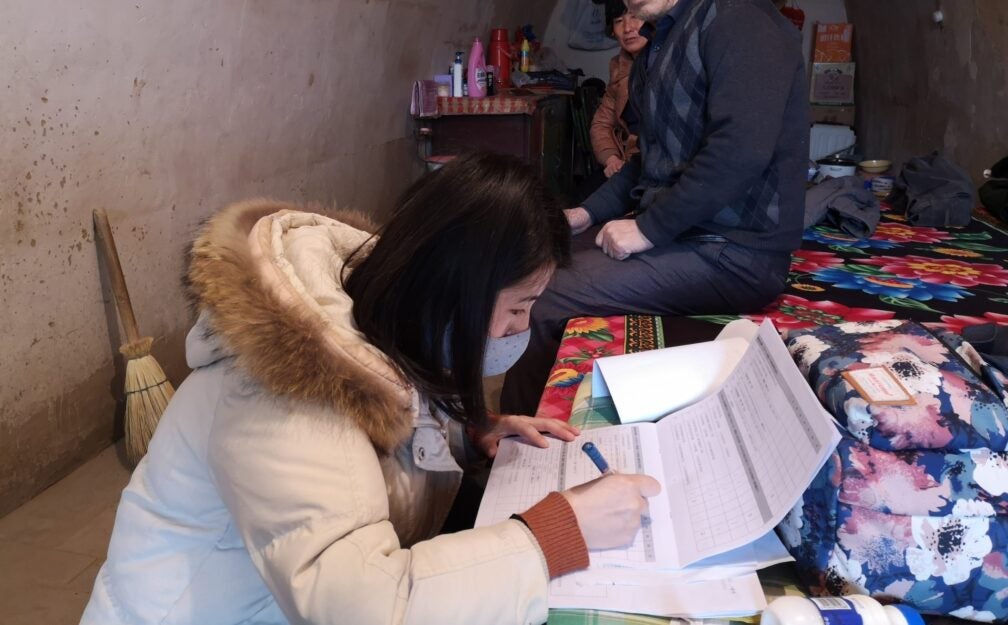The management of chronic disease and its economic impact on households in rural China have been the focus of three articles recently published by our team based on our collaboration with the primary health care project of the National Health Commission and the Bill and Melinda Gates Foundation. Stronger primary care management of chronic disease was found to decrease unnecessary hospitalizations and this reduce financial burden.
- Chen, Siyuan, Wuping Zhou, Weiyan Jian, Jie Pan, Hongqiao Fu, and Winnie Yip. 2021. “Avoidable Hospitalization for Diabetes and Hypertension in Rural Residents in Central China” (我国中部农村居民糖尿病和高血压可避免住院现状研究). Chinese Health Quality Management. 28(5):95-97. doi: 10.13912/j.cnki.chqm.2021.28.5.26.
Summary: Objective. To analyze the current situation of avoidable hospitalization for diabetes and hypertension in rural residents in central China to provide policy suggestions. Methods. The quantitative data from a field survey conducted by the China-Gates Foundation Rural Basic Health Care Project in rural areas of central China was used to select a random sample of hospitalized cases in 2017 and/or 2018 in five counties. Data were analyzed using STATA/MP 14.0 software. Results. A total of 28 392 hospitalizations were included, of which 863 cases of diabetes and 1 003 cases of hypertension could have been avoided. From 2017 to 2018, total hospitalization costs, average cost per hospitalization, average out-of-pocket cost per hospitalization, and average out-of-pocket cost per hospitalization for diabetes and hypertension showed an increasing trend. The length of avoidable hospitalization and length of stay per hospitalization were decreased for diabetes and hypertension. Conclusion. The avoidable hospitalization was common for diabetes and hypertension which increased the economic burden of patients. It was suggested to improve the primary health care service system, strengthen the health education and management of chronic diseases, and increase the reimbursement rate of community-level outpatient clinics.
2. Hu, Haiyan, Weiyan Jian, Hongqiao Fu, Hao Zhang, Jay Pan, and Winnie Yip. 2021. “Health service underutilization and its associated factors for chronic diseases patients in poverty-stricken areas in China: a multilevel analysis.” BMC Health Services. doi: 10.1186/s12913-021-06725-5.
Summary: This study aims to describe health services underutilization for people diagnosed with chronic diseases in impoverished regions and to identify its associated factors, which is expected to have practical implications for the implementations of interventions tailored to the specific needs of disadvantaged residents in rural China to achieve effective utilization of health services in a timely manner. Our results suggest that the implementation of a series of comprehensive strategies should be addressed throughout the policy-making process to improve the provision of regular source of care as a significant determinant for reducing health services underutilization, thus ultimately achieving equal utilization of health services in impoverished regions, especially among chronic disease patients.
3. Zhao, Xiaoshuang, Yumeng Zhang, Yili Yang, and Jay Pan. “Diabetes-related avoidable hospitalisations and its relationship with primary healthcare resourcing in China: A cross-sectional study from Sichuan Province.” Health & Social Care in the Community 00, 1–14 (2021). doi: 10.1111/hsc.13522
Abstract: The reduction of diabetes-related avoidable hospitalisations (AHs) can be achieved via the provision of timely and effective primary healthcare (PHC), which has made diabetes AHs rate a widely adopted indicator for evaluating the performances of PHC systems. This study reported the AHs rate of diabetes and further explored its relationship with PHC resourcing in China. Hospital discharge data of the fourth quarters of 2016 and 2017 in Sichuan Province, China were used. The number of PHC doctors per 10,000 population and the proportion of PHC doctors on all doctors were used as indicators reflective of PHC resourcing. Linear regression models were used to explore the associations between PHC resourcing and AHs of diabetes. Age-standardised rates of diabetes-related AHs in Sichuan province, China were found to be 248.102 and 272.368 per 100,000 population in 2016 and 2017, respectively. A 10% increase in the number of PHC doctors per 10,000 population was associated with a reduction of 2.574 per 100,000 population in the age-standardised AHs rate of diabetes. In addition, 10% increase in the proportion of PHC doctors on all doctors was associated with a reduction of 10.839 diabetes-related AHs per 100,000 population. Based on subgroup analysis, PHC resourcing demonstrated to have a stronger impact on AHs of diabetes with long-term complications than on that of uncontrolled diabetes. Our findings reported that the diabetes AHs rates in Sichuan Province were prevalently high. We also found that increased PHC resourcing was associated with decreased diabetes-related AHs rates.

